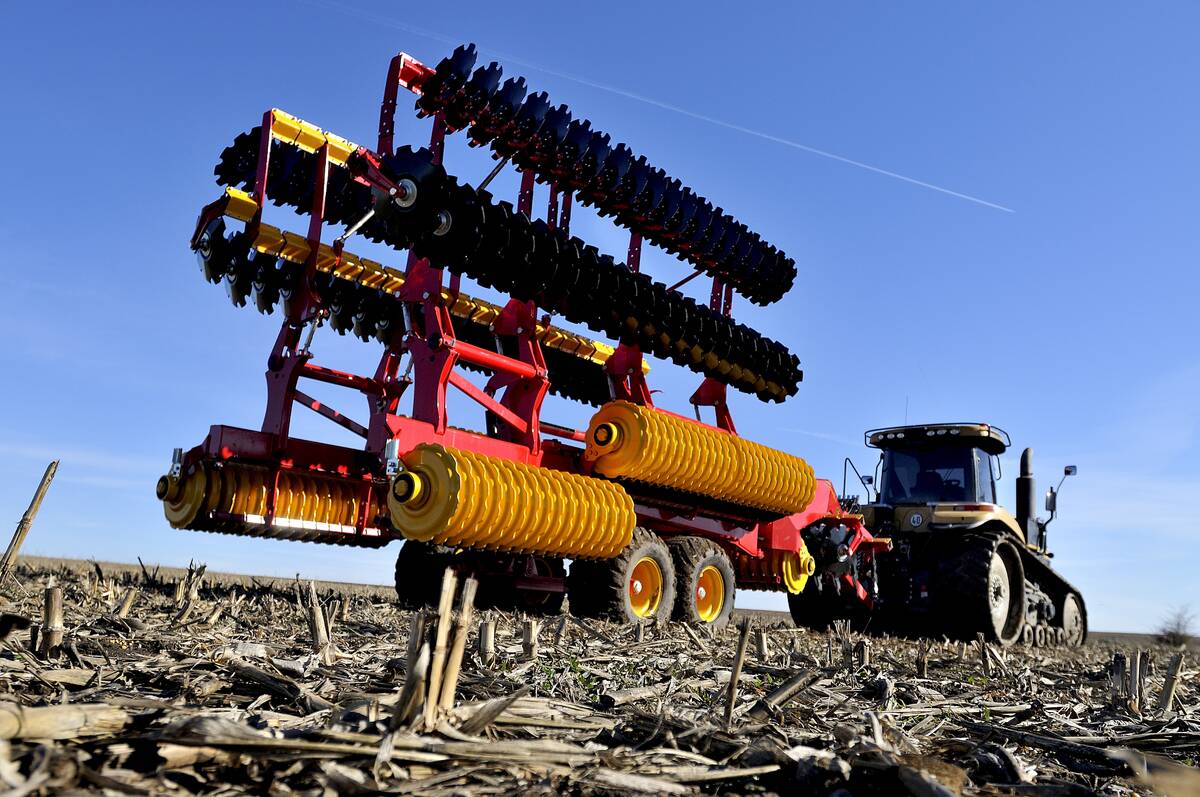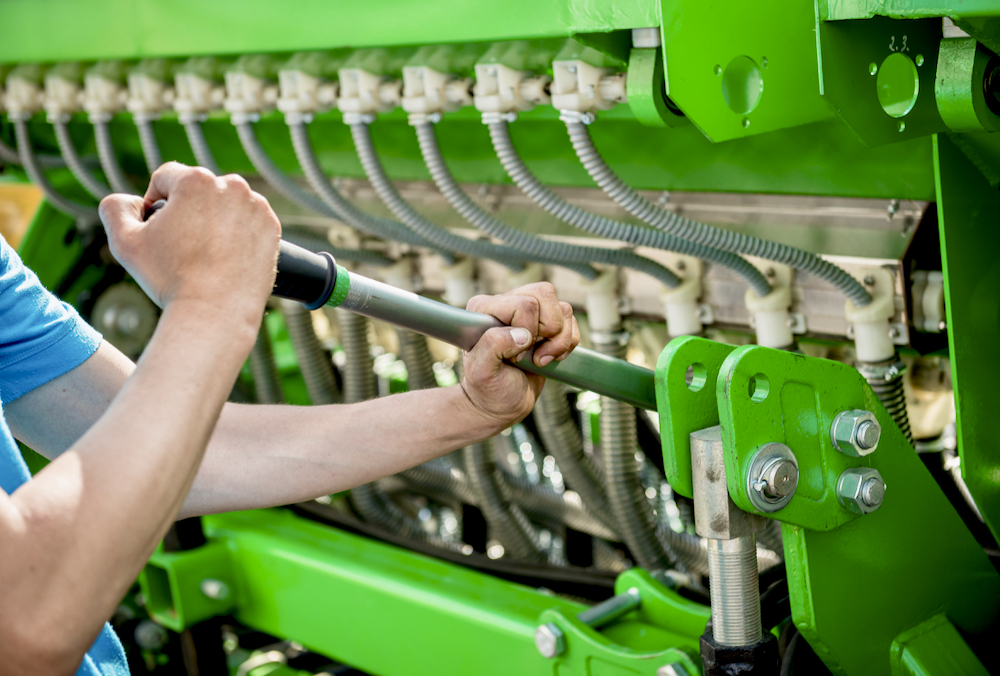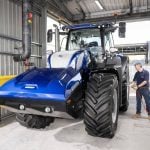Jiggling and twisting around while operating equipment can lead to back problems for farmers.
Take a Break from the Shake is a new research project at the University of Saskatchewan that looks for ways to relieve those negative health effects.
“The main objective of the work is to explore and develop strategies to help agricultural machinery users in reducing the amount of whole-body vibration that they’re exposed to on a day-to-day basis,” said Dr. Dena Burnett from the School of Rehabilitation Science, who is collaborating with the Canadian Centre for Health and Safety.
Read Also

Evolution of European equipment manufacturers runs deep
A look at how Lemken and Väderstad have evolved from their traditional offerings of tillage equipment to include planting and seeding equipment in their lineups.
Why it matters: Canadian researchers hope to help farmers reduce muscle and skeletal injuries from vibrating farm equipment.
Whole-body vibration refers to the shaking a person experiences when sitting in a tractor, sprayer, swather, combine, ATV, grain truck, utility vehicle, and any vehicle, even a car. It comes from machinery vibration that moves through the feet, legs or seat that can cause debilitating musculoskeletal disorders.
“There’s a lot of negative health effects that can be a result of that high level, high intensity, whole body vibration exposure that ag machinery operators are exposed to every day, the big ones being low back pain and muscular skeletal deficits,” said Burnett.
“Canadian agricultural workers have the highest prevalence of low back pain in the country and they’re also at highest risk of developing low back pain in the future,” she added.
Long-term exposure to whole-body vibration produces high incidents of osteoarthritis in the hip, saucio arthritis in the knees, as well as neck, shoulder and lower back issues. There’s also impact on the cognitive side, such as reduced balance, reaction time and muscle action.
Climbing down the ladder or steps after hours of operating a machine is often where whole-body vibration issues appear.
“When you take that last step off the tractor you’re no longer being vibrated. Your balance and your reaction time (have) been compromised. Your muscles are tired because they’ve been dealing with this vibration exposure.
“Your body is anticipating to fall a little bit and you’re not able to catch yourself because you’ve been disoriented, your muscles are sore and there’s also a balance issue,” Burnett said.
“So, you put all three of those elements together and it creates a perfect storm for slips, trips, falls and near misses right at the bottom of the stairs. We’re trying to help farmers develop strategies to reduce the impact of that step.”
The study will try to determine whether a variety of short rest and activity breaks while using farm machinery can reduce negative health effects.
Other industries, such as mining and construction, have rest breaks built into the workday in the form of coffee breaks several times a day, as well as not working after dark.
“When it comes to agriculture, we don’t always have that luxury. You hop in the machine at the beginning of the day and you go either until something breaks or you’re tired. That could be a long day. You do that continuously for about six weeks at a time because you have to work around the weather and all the external factors to deal with it,” said Burnett.
Farmers tend to leave their seats only when nature calls or when something breaks, though they occasionally also calibrate for seed and unplug openers, conveyers and augers.
“We easily can add a five-minute break or walk to that. Go to the fence post and that kind of thing, or add some trunk rotation extensions, flexion like some targeted muscular skeletal exercises,” she said.
Researchers are also exploring gaze stabilization testing, a strategy used with concussion patients.
“It’s essentially moving your head around while stabilizing your vision at a certain point to reset the proprioceptive system, the balance sensors inside your body.”
Examples of proprioception include being able to walk or kick without looking at your feet or being able touch your nose with closed eyes.
So far, 10 farmers have volunteered to take part in the in-lab study to determine what types of activities are effective in reducing the negative effects of whole-body vibration exposure on musculoskeletal pain, balance and reaction time. The researchers are looking for another 10 participants.
Participants entering the ergonomics lab at the Health Sciences Building on the University of Saskatchewan campus will climb into the vibration machine, which is a modified tractor cab on top of a six-axis hexapod platform called a rotopod. It was custom built for the study.
The simulator is programmed to mimic the vibration profile of a 1978 Versatile Enfield, which is known for its rough ride.
“They hop up into the cab for an hour and get to play a farming simulator game, while also feeling the simulated vibration from a tractor in field,” Burnett said.
A smartboard provides a video game experience so operators get a sense of being in an actual tractor cab. There’s a steering wheel, controls on the screen and windows.
“It’s not perfect simulation but the idea is to have your brain busy doing something and making changes to what you’re doing, just like if you were to go out into the field while experiencing a vibration that you would also feel in the field,” she said.
“In the lab, we’ve got a list of different activities that we’re going to have people do, either walking or sitting quietly, just the act of taking a break, or to try some targeted stretching or gaze stabilization treatment.
“If we can identify which of those breaks will provide the most effective recovery in balance or in reaction time, then those will be the activities that we’re going to try to target in the field,” Burnett added.
“It’s not just the act of having a break, but what would be the best thing that you could do in that five minutes if you’re only able to take five minutes.
“We know that taking care of your body by doing stretches, going for a walk, even just reducing the vibration that you’re exposed to — those small little actions right now will add up over time and reduce cumulative exposure.”
In the next several months, information gleaned inside the lab will be applied to practical and feasible field tests this summer.
“The true test is going to be, can we take what we’ve learned in the lab and apply it in the real world,” said Burnett.
–This article originally appeared in the Western Producer.














